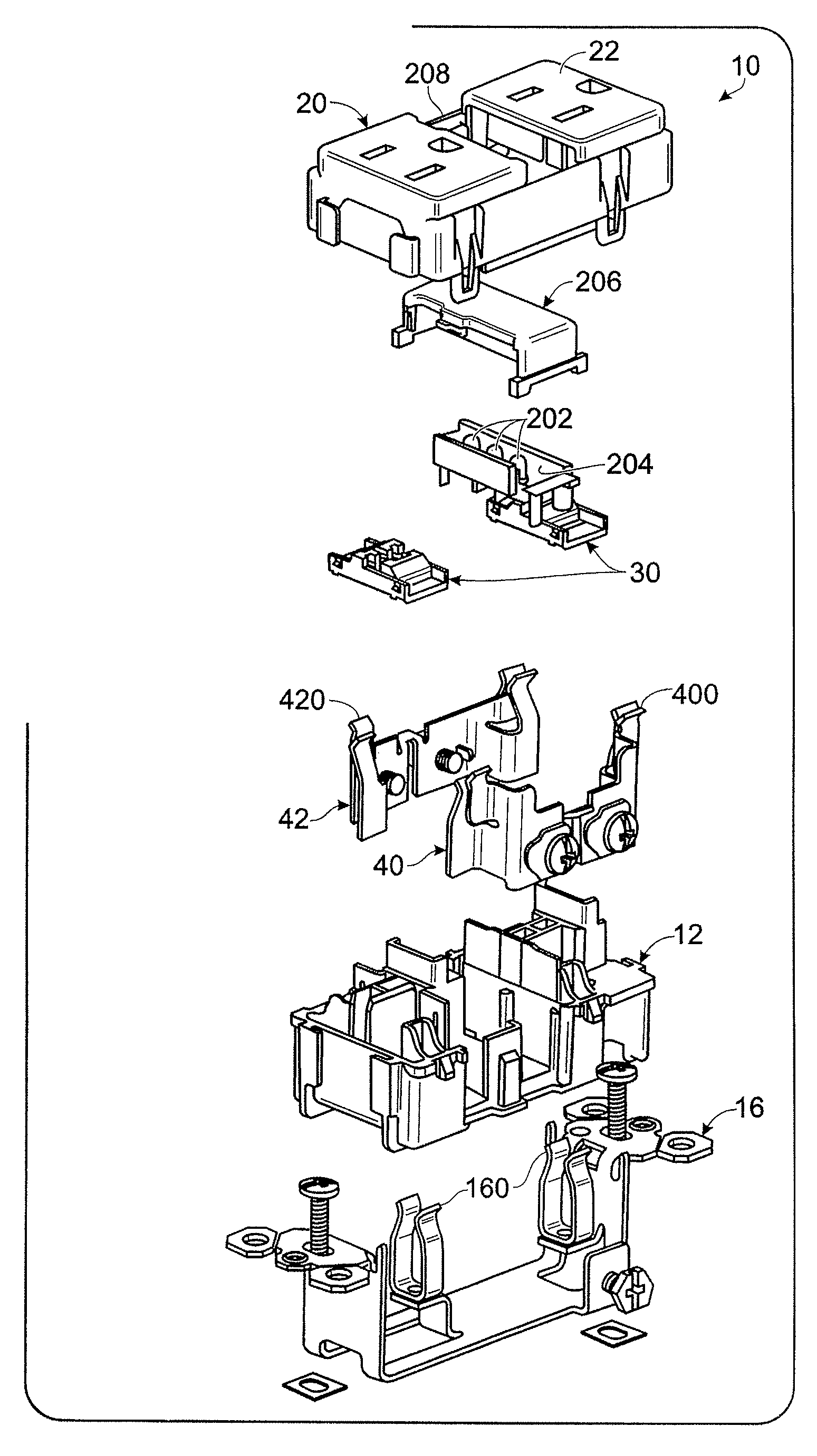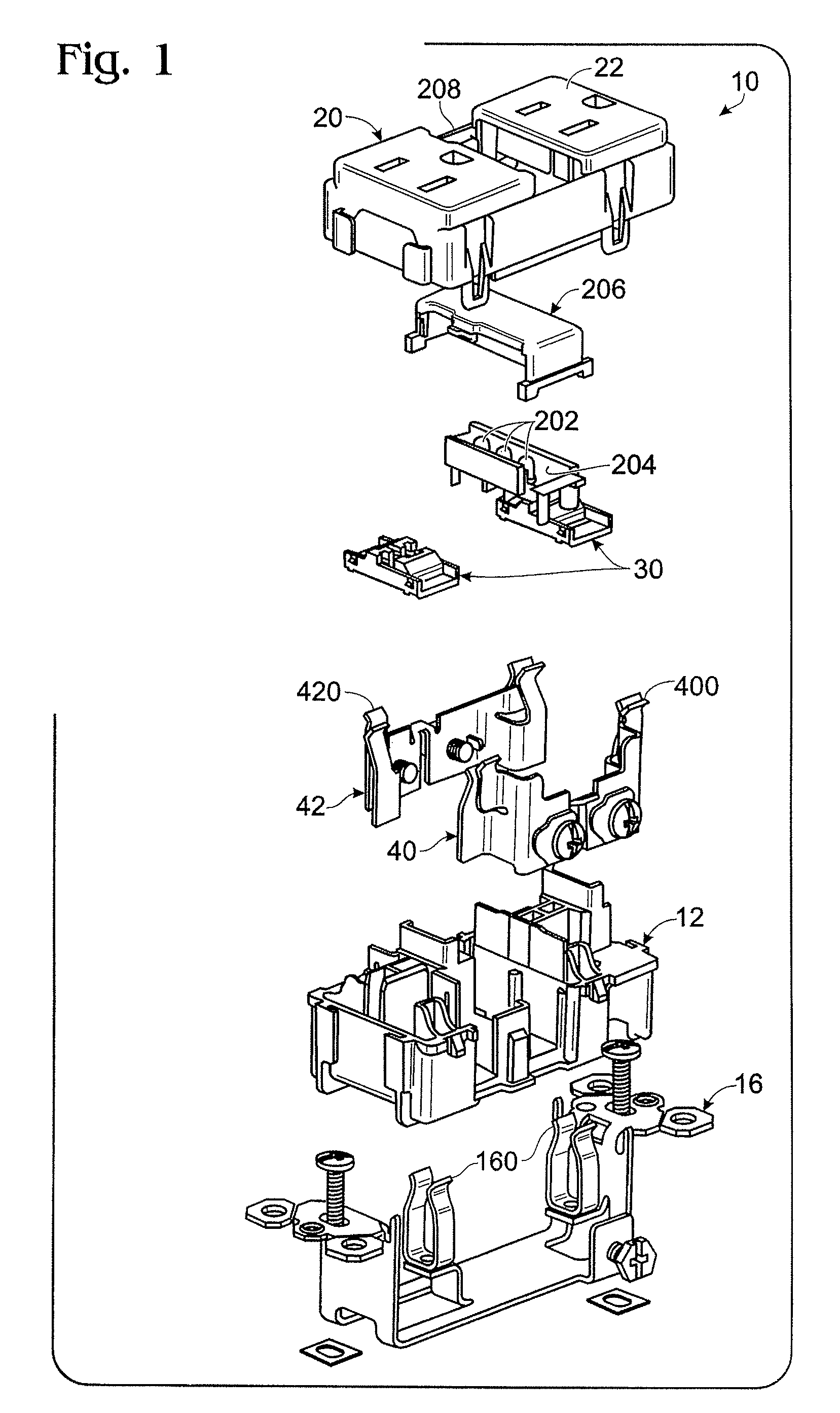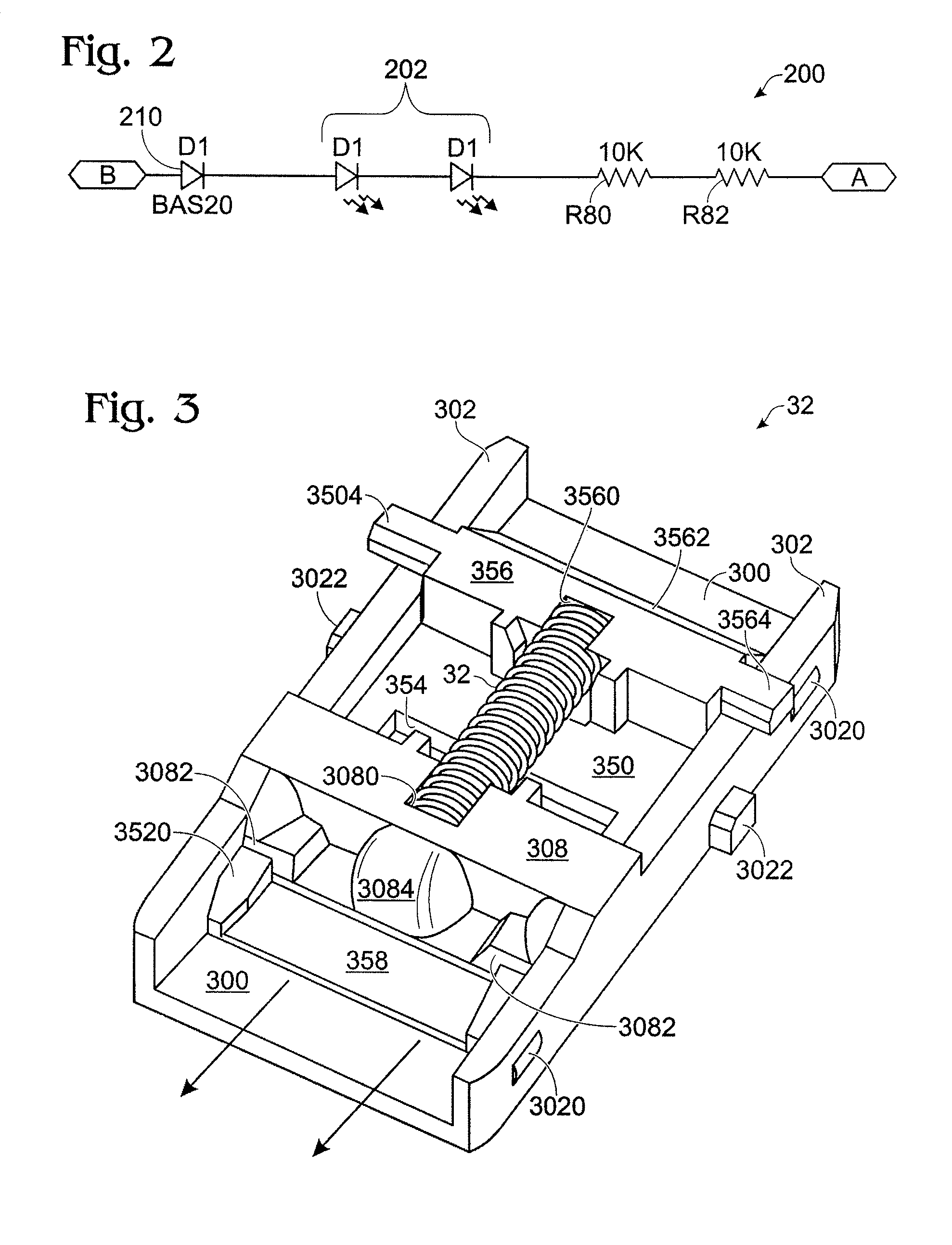Electrical wiring device with a center nightlight and a plurality of safety features
a technology of safety features and wiring devices, applied in the direction of connection of coupling devices, connection contact materials, electrical apparatus casings/cabinets/drawers, etc., can solve the problems of fire, shock or electrocution, certain types of faults known to occur in branch electric circuits and electrical wiring systems,
- Summary
- Abstract
- Description
- Claims
- Application Information
AI Technical Summary
Benefits of technology
Problems solved by technology
Method used
Image
Examples
first embodiment
[0029]As embodied herein and depicted in FIG. 1, an exploded view of the device 10 in accordance with the present invention is disclosed. Device 10 includes a receptacle outlet device with center night light assembly 200. Cover member includes receptacle openings 22 disposed at either end. In the central portion, opening 208 is formed therein. Opening 208, of course, is configured to accommodate lens element 206. The lens 206 is configured to mate with reflector member 204 which includes white LEDs 202 disposed therein. The LEDs 202 are connected to pig tailed wires connected across receptacle terminal structures 40, 42. Of course, the cover member 20 also accommodates shutters 30.
[0030]The hot and neutral receptacle terminals (40, 42) are disposed within back body member 12. When the ground strap structure 16 is inserted into body member 12 from behind, the hot receptacle terminals 420, the neutral receptacle terminals 400, and the ground terminals 160 are perfectly aligned with th...
second embodiment
[0043]Referring to FIG. 5, a schematic of the center night light assembly in accordance with the present invention is shown. Again, the satellite PCB 201 receives power from the receptacle terminals 30, 32, which are connected at points “A” and “B”, respectively. When the ambient light is above a certain level, light sensor 212 reacts to the ambient light level and diode D3 begins to conduct. In one embodiment, sensor 212 is implemented using a light sensing diode and the amount of current conducted by sensor 212 is related to the amount of incident ambient light. As the ambient light increases past a predetermined level, which may be adjusted by potentiometer R6 in the factory, the Darlington transistor pair (Q1, Q2) are turned OFF. In particular, the current flow through D4 pulls down the base of transistor Q1. Q1, in turn, pulls down the base of Q2. When the ambient light begins to decrease, e.g., as night falls, the current flowing through sensor 212 begins to decrease according...
fifth embodiment
[0046]FIG. 6 is a perspective view of the fully assembled device in accordance with the present invention. The front cover 20 of the device includes light assembly lens 206 and sensor lens 207. Both lens elements (206, 207) are substantially flush with the surface of the cover 20.
PUM
 Login to View More
Login to View More Abstract
Description
Claims
Application Information
 Login to View More
Login to View More - R&D
- Intellectual Property
- Life Sciences
- Materials
- Tech Scout
- Unparalleled Data Quality
- Higher Quality Content
- 60% Fewer Hallucinations
Browse by: Latest US Patents, China's latest patents, Technical Efficacy Thesaurus, Application Domain, Technology Topic, Popular Technical Reports.
© 2025 PatSnap. All rights reserved.Legal|Privacy policy|Modern Slavery Act Transparency Statement|Sitemap|About US| Contact US: help@patsnap.com



